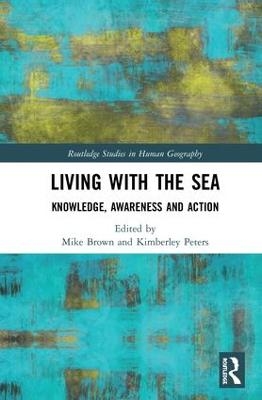
Living with the Sea
Routledge (Verlag)
978-1-138-06207-8 (ISBN)
This ambitious book brings together an interdisciplinary and international cohort of contributors from within and beyond academia. It offers a range and diversity of insights unlike previous collections. An ‘oceanic turn’ is taking place, with a burgeoning of academic work that takes seriously the place of seas and oceans in understanding socio-cultural and political life, past and present. Yet, there is a significant gap concerning the ways in which we engage with seas and oceans, with a will to enliven action and evoke change. This book explores these challenges, offering insights from spatial planning, architectural design, geography, educational studies, anthropology and cultural studies. An examination through these lenses can help us to better understand human relationships with the seas and oceans, and promote an ethic of care for the future.
Mike Brown is the General Manager of Coastguard Boating Education, New Zealand. He holds a part-time Senior Research Fellowship at Auckland University of Technology. Published works include Adventurous Learning: A Pedagogy for a Changing World (2016), and Seascapes: Shaped by the Sea (2015, with B. Humberstone). Mike has been involved in UK sail training and cruised the South West Pacific by sailboat. He lives on his yacht within a few hundred metres of his workplace. Kimberley Peters teaches Human Geography at the University of Liverpool. Her research seeks to better understand the governance of maritime and other ‘non-grounded’ spaces. She is a member of Liverpool’s Institute for Sustainable Coasts and Oceans (LISCO) and the Centre for Port and Maritime History. Her work includes The Mobilities of Ships (2015) and Carceral Mobilities (2017). Kimberley has written over 30 peer reviewed articles and book chapters.
1: Introduction Living with the Sea: Knowledge, Awareness and Action Part One: Approaches and Advances 2: Architecture and Design Between Seascape and Landscape: Experiencing the Liminal Zone of the Coast 3: Marine Spatial Planning Sea Change Tai Timu Tai Pari: Reflections on Marine Spatial Planning in the Hauraki Gulf 4: Geo-Spatial Analysis Assessing the Multiple Values and Complexity of Seascape 5: Educating and Learning Developing Action Competence: Living Sustainably with the Sea 6: History and Heritage Re-examining Seascapes aboard the Charles W. Morgan (America’s last whaling ship): A Return to Sea after Ninety Years 7: Anthropology and Self-Reflection Sensory Autoethnography for Understanding and Communicating ‘Seaspacetimes’ Chapter Eight: Science and Culture Transitioning Currents in Times of Climate Change Part Two: Engagements and Experiences 9: Seafarers and Work Endless, Sleepless, Floating Journeys: The Sea as Workplace 10: Surfers and Leisure ‘Freedom’ to Surf? Contested Spaces on the Coast 11: Students and Teachers Te hone moana / The Ocean Swell: Learning to Live with the Sea 12: Bodies and Technologies Becoming a ‘Mermaid’. Myth, Reality, Embodiment, Cyborgs, Windsurfing and the Sea 13: Pasts and Presents Making Connections with the Sea: A Matter of a Personal and Professional 14: Rituals and Performance Crossing the line: All at Sea with King Neptune Mid-Pacific 15: Conclusions Learning to Live with the Sea Together: Opening Dialogue, Creating Conversation
| Erscheinungsdatum | 31.08.2018 |
|---|---|
| Reihe/Serie | Routledge Studies in Human Geography |
| Zusatzinfo | 1 Line drawings, black and white; 24 Halftones, black and white; 25 Illustrations, black and white |
| Verlagsort | London |
| Sprache | englisch |
| Maße | 156 x 234 mm |
| Gewicht | 500 g |
| Themenwelt | Naturwissenschaften ► Geowissenschaften ► Geografie / Kartografie |
| Naturwissenschaften ► Geowissenschaften ► Hydrologie / Ozeanografie | |
| ISBN-10 | 1-138-06207-3 / 1138062073 |
| ISBN-13 | 978-1-138-06207-8 / 9781138062078 |
| Zustand | Neuware |
| Haben Sie eine Frage zum Produkt? |
aus dem Bereich


